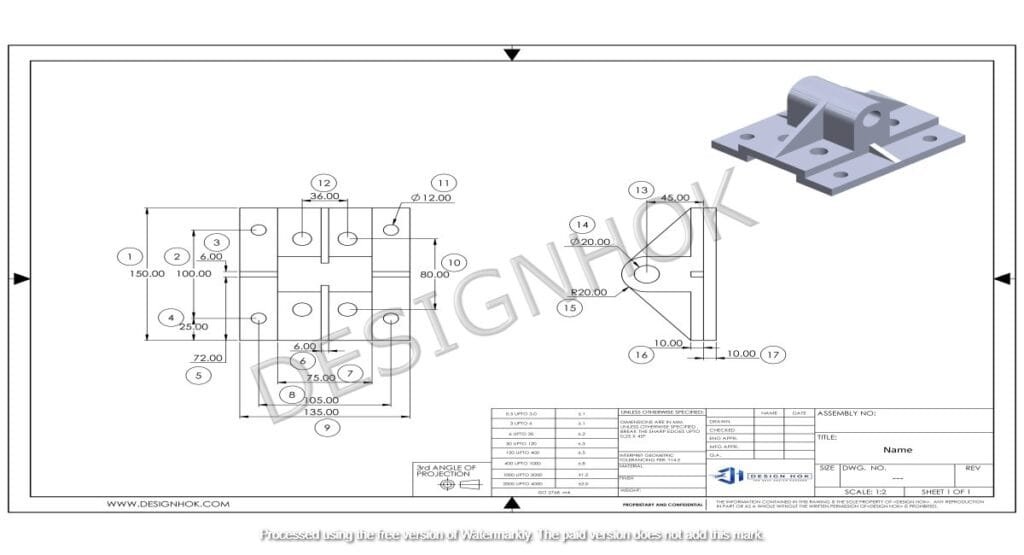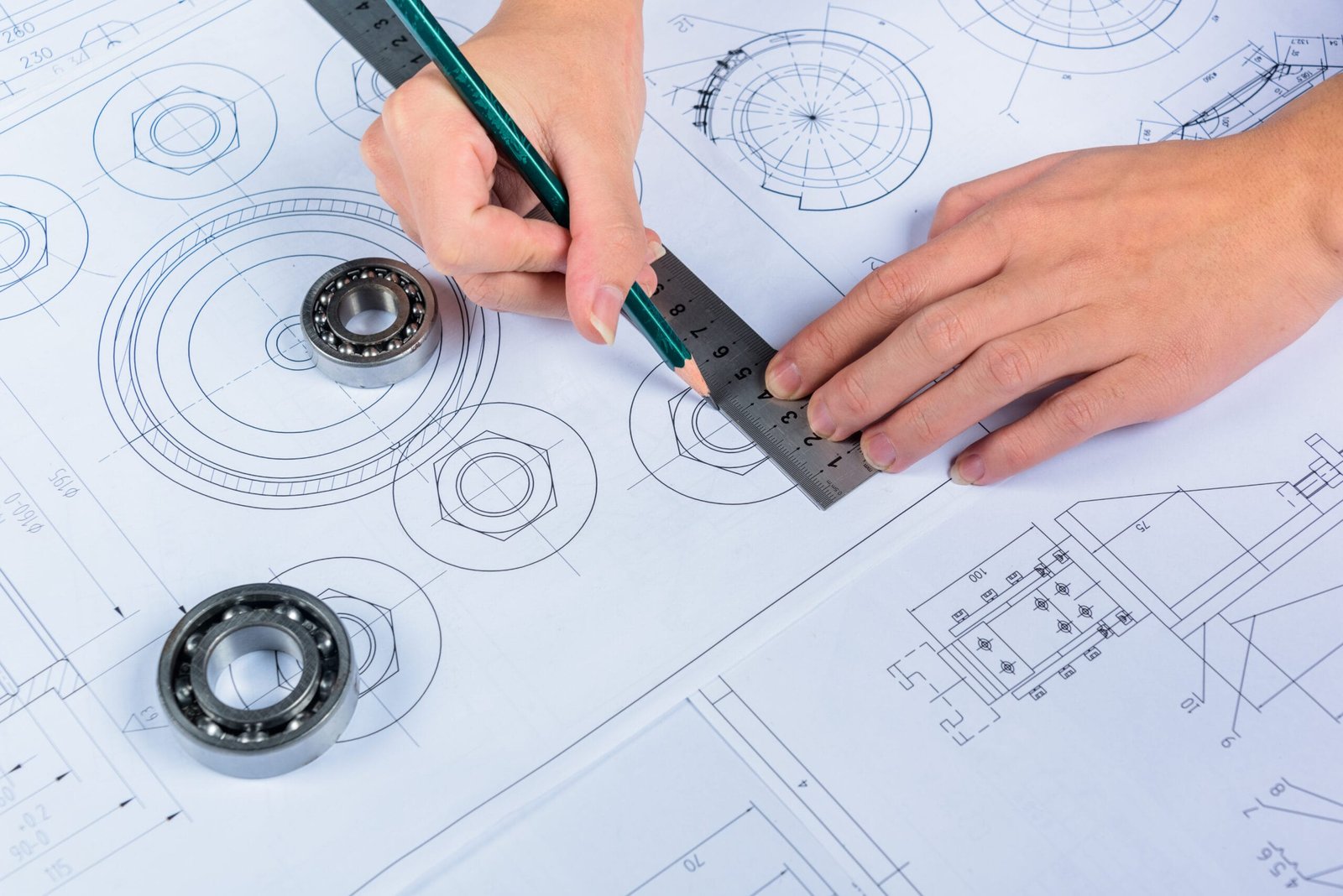Learn about the key 3D modeling industry standards that ensure quality, consistency, and efficiency at DesignHok. We will explain to you the best practices. Software, formats, and workflows. You will get to know how Design Hok offers high-quality services.
Introduction
A number of fields depend on 3D modeling. These include engineers, product designers, and manufacturers. At DesignHok, we deliver professional standard 3D modeling services for various industries. So, you can maintain quality, accuracy, and professionalism by following the rules and standards of the industry. We follow the standard rules for everything, such as designing a complicated mechanical part or a detailed model.
This blog will guide you through the main 3D modeling standards we follow at DesignHok. We’ll cover software, file formats, accuracy, collaboration, and workflow practices.

Importance of 3d Modeling
You should not consider standards as just rules. They help in making models accurate, usable, and efficient. You minimize errors, save time, and make sure that your teamwork is smooth.
So, Design Hok follows international standards for various purposes. They ensure models work with simulation software as well as various machines and applications.
Important 3D Modeling Standards at DesignHok
1. Standards of Document Formatting
You can easily change, create, and share quickly in the right format. Here are the formats that we use:
- STEP: You can share solid models among CAD systems in this format.
- IGES: It is best for surface and wireframe geometry.
- STL: It is commonly used for 3D printing.
- OBJ: This format is ideal for rendering, animation, and other projects.
- DWG: It lets you link 2D and 3D CAD data in it
We make sure that the scale, geometry, and detail are exact without losing the data.
2. Program Adaptability
Our work involves the use of trusted 3D modeling software. This ensures smoothness in our work. The following are some software:
- AutoCAD
- SolidWorks
- Fusion 360
- Revit
- SketchUp
- Blender
- Rhino
If you keep software up to date, it helps us provide quick revisions and models that are free of errors.

3. Exactness and Limits
You need to make sure that your values are exact for professional 3D modeling. The following are some rules that must be followed:
Mechanical parts: You can keep a tolerance of ±0.005.
Models: Ensure the scales and material details are exact.
3D printing: You should ensure that the models are clean and tidy.
Our work includes testing each model carefully to meet the needs of its use. It can be simulation, machining, or prototyping.
4. Detailed Models
We create models with different levels of detail for numerous reasons:
- LOD 100: It is for basic conceptual design
- LOD 200: This is required for general models with rough dimensions
- LOD 300: It is necessary for detailed geometry with materials
- LOD 400: This is important for fabrication-ready models
- LOD 500: They are for as-built models for maintenance
This makes sure that clients receive what they require at the project stage.
5. Naming Clearly and Management:
Our projects have a clear naming and managed layer system:
- Model Naming: Project_Component_Revision
- Layers: Organized by part, material, or function
Clear labels make it easy for other teams to work with our files.
6. Shape Count and Improvement
For games, AR/VR, or web models, we balance detail and performance. If you have improved your polygons, then it results in smooth visuals and quick performance.
7. Respecting the Rules
We follow global standards like:
- ISO 10303 – This is a standard for sharing products.
- ISO 16792 – It is a standard for 3D technical documentation
- ASME Y14.41 – It is a standard for defining products in 3D
This makes sure our models meet requirements. So, the standards are used for various industries like aerospace, automotive, manufacturing, and construction
Process of 3D Modeling
- Understand client needs
- Sketch and draft rough models
- Build detailed 3D models with feedback
- Optimize files and check quality
- Export final models with documentation
- Provide support and revisions
At Design Hok, we follow every step according to industry standards and internal checks.
Why Should I follow the Rules
You achieve steady results on every project.
Your models are easy to use in any application
Work is provided quickly to the clients with fewer errors.
Teams understand each other
Clients are happy with your work.
Summary
You make sure to follow the rules at Design Hok to provide 3D modeling industry services. These rules make sure that your models are free of errors, accurate, and efficient.
We assure you that we provide professional results. This can be mechanical designs, models, or product prototypes. So, you can work with us to turn your dreams into reality.
FAQs
Q1. List the file formats that you use.
We use formats including STEP, IGES, STL, OBJ, and DWG/DXF depending on the project.
Q2. Name the industries that you provide services for?
These include mechanical, industrial, product, and construction sectors.
Q3. Do you follow international standards?
Yes. ISO, ASME, and BIM-related standards ensure global compliance.
Q4 Can you prepare models that can be printed in 3D?
Sure, our models are improved to work efficiently.
Q5. List the software that you use.
Our software includes AutoCAD, SolidWorks, Revit, Fusion 360, Blender, SketchUp, and more.
Q6. Can you create models based on the client’s requirements?
Yes, we make changes to the models, keeping in mind the shape, material, detail level, and format.





